Ethereum, the "eternal runner-up", seems out of place in this bull market. Compared with the strength of Bitcoin, SOL and other currencies, ETH has been hovering around $3,000. In addition, the frequent selling of coins by the Ethereum Foundation has caused strong dissatisfaction in the community, and the market's confidence in Ethereum seems to be shaken. Combined with the hidden cost of the Layer2 war and the siphon effect of the Solana Meme economy, the future of Ethereum seems to be becoming increasingly unclear amid many controversies.
EF frequently sells coins and “loses goodwill”
The Ethereum Foundation (EF) has been selling ETH on and off, and recently sold another 100 ETH, worth about $307,893. Data from blockchain analysis company SpotOnChain shows that this is the third ETH sale conducted by the Foundation in 2025.
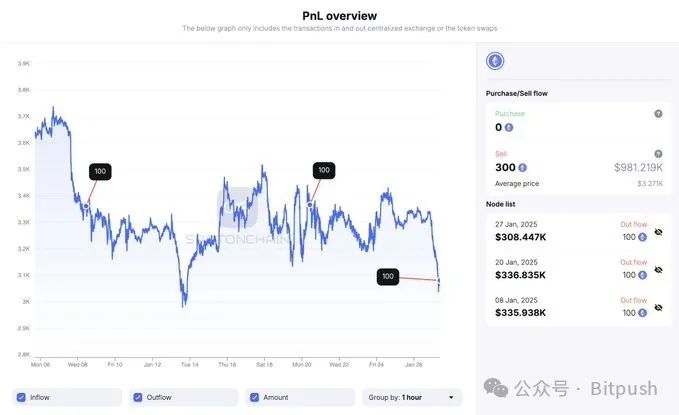
In January this year, EF sold a total of 300 ETH (as of January 27), worth about $981,200. Market observers pointed out that the foundation's selling behavior put pressure on the price of Ethereum. As of press time, ETH is trading at just over $3,000, down more than 7% in 30 days.
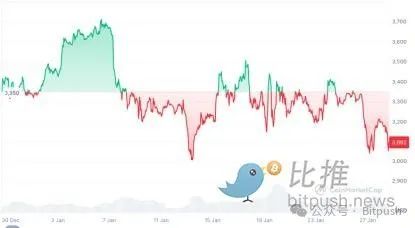
However, the Ethereum Foundation still holds a large amount of ETH reserves. According to Arkham Intelligence, the foundation owns 269,175 ETH, worth about $817 million.
At the same time, Ethereum's on-chain activity also lags significantly behind other competing chains.
According to DappRadar data, Ethereum on-chain transaction volume fell 38% to $36.5 billion over a seven-day period.
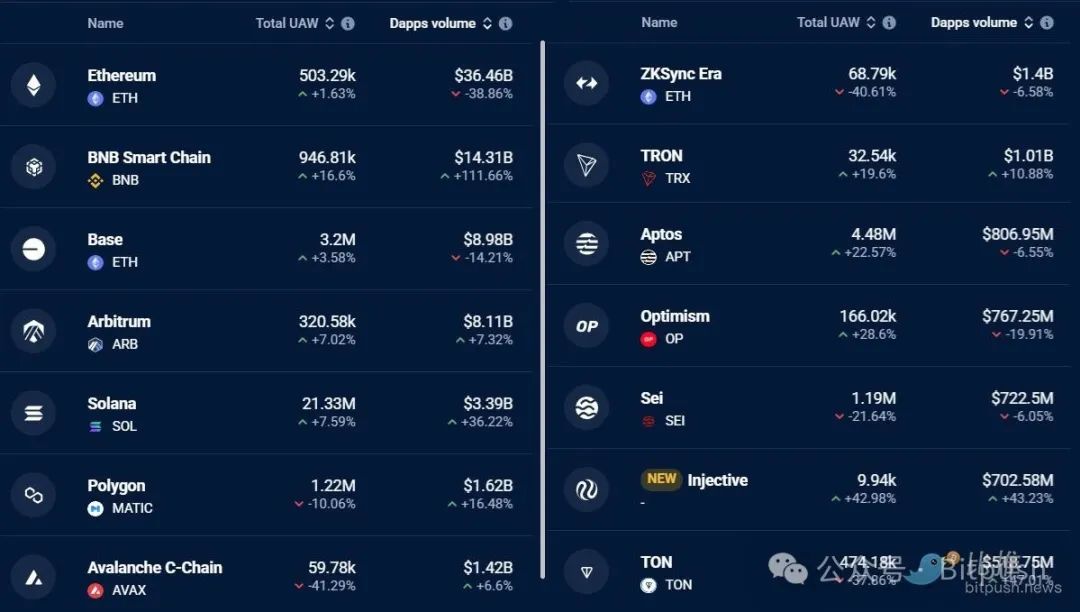
In comparison, activity on BNB Chain surged 112%, while Solana grew 36%.
According to DefiLlama, Ethereum generated just $46 million in fees between January 14 and January 21. In contrast, Solana collected $71 million in fees, and if contributions from Raydium, Jito, and Meteora are included, its total for the same period reaches $309 million.
Ethereum L2 is criticized as a "band-aid": the "division" behind the prosperity,
The sluggish performance of ETH comes at a time when the Ethereum Foundation is facing severe challenges, with calls for innovation and internal restructuring growing louder. The rise of rival blockchains such as Solana has intensified the need for Ethereum to improve its own strength and innovate within the ecosystem in order to maintain its competitive advantage.
The emergence of Layer 2 solutions such as Optimism and Arbitrum has alleviated the congestion and high gas fee problems of the Ethereum mainnet. However, the competition among these Layer 2s is becoming increasingly fierce, and the problem of ecosystem fragmentation has also become prominent.
Michael Egorov, founder of decentralized exchange Curve Finance, criticized in a report that L2 "is more like a Band-Aid... and a temporary solution than a foundation for building a sustainable strategy." He emphasized that the Rollup roadmap hinders composability and "leaks" most of the value of ETH to L2 tokens and their operating companies.
Justin Drake of the Ethereum Foundation called in a post shared on X last weekend: "Enable native Rollup technology to end the era of Layer2 separatism."
Crypto research and investment firm Paradigm also called for reform. The company believes that Ethereum's current annual upgrade schedule limits its ability to innovate and respond effectively to market trends. Paradigm said: "Accelerating the development of Ethereum will enable more people to enjoy the convenience of permissionless innovation and help pave the way to a truly global, trust-minimized financial system."
Facing increasing pressure, the Ethereum Foundation announced plans to allocate 50,000 ETH (about $165 million) to support its decentralized financial ecosystem.
Ethereum co-founder Vitalik Buterin said the foundation is indeed making a “significant change” to its leadership to increase transparency and better support developers.
Technical analysis: key support and market sentiment game
If we go by the old saying, February and March have always been bullish for ETH.
Coinglass data shows that ETH has been on an upward trend in February for the past six consecutive years, with the largest increase occurring in 2024, when it rose from $2,280 to $3,380 at the end of the month, an increase of more than 46%. March is also historically a favorable period for ETH. In the past nine years, it rose in March in seven years and in April in six years.
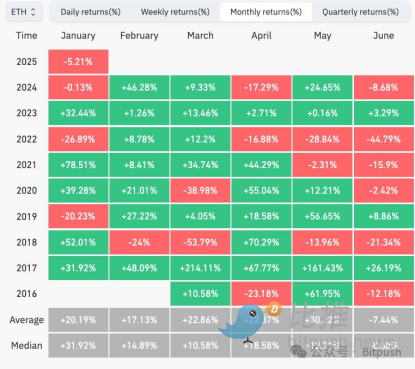
Engineer and analyst Wolf wrote on X on January 26: "With eight years of experience as an analyst, I can confidently say that I have never seen a chart as strong as ETH, and the potential here is unparalleled. This is the best asymmetric bet you can make."
Technical analyst Rakesh believes that ETH/USDT may fall to $2,850, which may become a strong support level. If the price rebounds from $2,850 but falls from the 20-day moving average ($3,308), it will show that bears are selling on rallies. This increases the risk of falling below $2,850. If this happens, the trading pair may fall to $2,400.
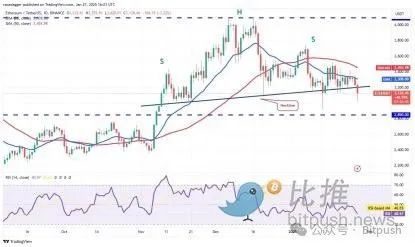
Time is running out for the bulls, and if they want to arrest the decline, they must push the price back above the 50-day SMA ($3,455). ETH/USDT may then continue to rally to $3,745.
In summary, when Solana reconstructs the traffic entrance with Meme coins and Layer2 becomes a value-pumping machine, Ethereum's moat seems to be seriously eroded. Technological advantages must be transformed into ecological dominance. The loss of each price support level may trigger a collapse of faith. Where will Ethereum go? Time will tell us the answer.















